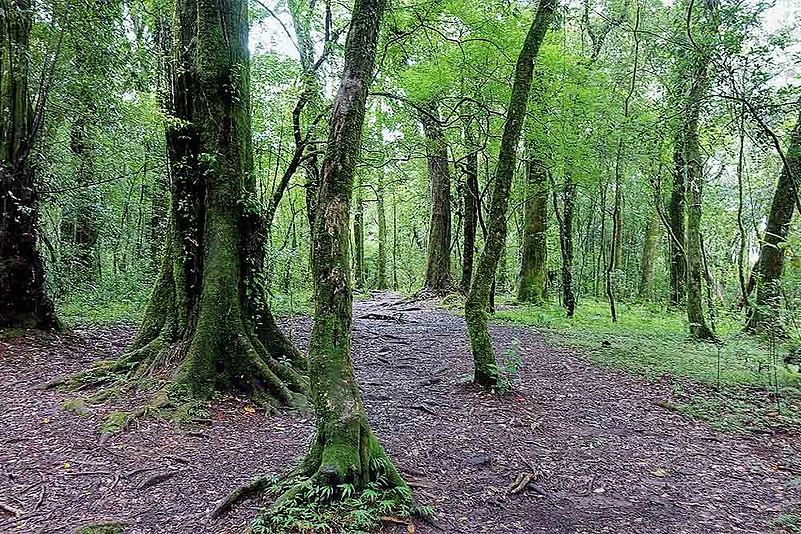The forest overwhelms your senses—sight, sound, smell. Colourful, flower-shaped mushrooms burst through the thick undergrowth. Moss and lichen cover every inch of the trees. A wren warbler calls out with its distinctive whistle-cry just before crickets and cicadas resume their cacophony, drowning the soft gurgle of a crystal clear stream as it takes a sharp bend over a bed of rocks. You look up and stare straight at a perfect heart-shape opening in the foliage—it’s a metaphor of the Mawphlang Sacred Grove.
Meghalaya is home to more than 100 such community-owned sacred groves across its hills and valleys, some spread over just one hectare, the biggest over 400 hectares. Mawphlang is about 77 hectares, but it is one of the most religiously protected; a biodiversity paradise just 25 km from the state capital, Shillong. “It’s where our deities reside…and anyone who disturbs the deities is punished,” says Tambor Lyngdoh, the secretary of Mawphlang. “Our ancestors showed us the way to live in perfect harmony with nature. And that’s what the sacred forests are all about,” he adds. Lyngdoh belongs to the matrilineal Khasi tribe, one of the three major population groups of the northeastern state. For the Khasis—as it is for the Jaintia and Garo tribes—even taking a fallen leaf from the sacred grove would offend the Sylvan deities. “The deities manifest themselves in many forms…as a snake if someone has broken the law of the forest or as a tiger to show appreciation for a good act,” Lyngdoh adds.

In India, such sacred forests are found in almost every state, mostly associated with religious beliefs which have bound together kings and commoners, communities and clans in protecting the green cover over hundreds of years. Beyond the religious connotations lies the value of these biodiversity hotspots—home to hundreds of species of flora and fauna, some of them very rare. And how well East Khasi Hills has managed to conserve its green cover lies in official data. In the India State of the Forest Report released in 2017, Meghalaya recorded a loss of 112 sq km of its forest cover. East Khasi Hills, however, showed a gain of six square km. “It’s a tiny gain but significant nevertheless, given the pressure on land and forests due to increasing mining and developmental activities,” says S.K. Singh, the officer in-charge of the Botanical Survey of India’s eastern regional centre in Shillong. Though the BSI has not done any recent survey of the sacred groves, Singh says their plant diversity is extensive. “An orchid species (rhomboda pulchra) once thought to be extinct was discovered at Mawphlang in 2012-13,” he adds.

Poisonous mushrooms abound in the forest.
Meghalaya’s forests are unique as they are owned by communities and not by the government, imbuing the people with a sense of duty towards their protection, says a professor at the North Eastern Hill University. “This community participation has worked in many other states. Big cities such as Delhi and Mumbai too can follow this model to protect their much-needed trees,” he adds.
In Mawphlang forest, believed to be more than 500 years old, time stands still—in the gnarled barks of the rhodendrons, in the lightning-struck, wrinkled branch of a fallen pine tree or a sparrow, long dead and gone, its feathers stripped away by time, till only a few pieces of its skeleton remain near a few fallen seeds from a elaeocarpus ganitrus (rudraksh) tree. But death is just a small part of this living world. For every tree that falls ten more rise, for every bird that dies, hundreds of others fly. Life finds a way at Mawphlang, its heart beating to every sound of this fairy arcadia
By Anupam Bordoloi in Shillong















